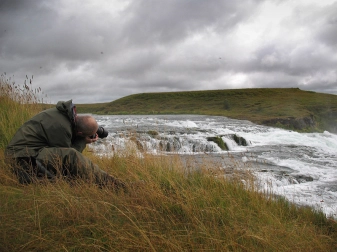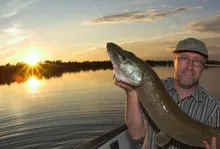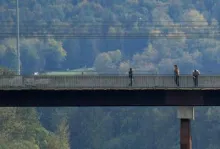Capturing the essence of the environment in which we fish can be tough. The vistas, the beauty, the clarity or the wildness of the water. How do we get all that into our cameras? This article in our Better Fishing Pictures covers the subject.
Capturing the essence of the environment in which we fish can be tough. The vistas, the beauty, the clarity or the wildness of the water. How do we get all that into our cameras?
Taking pictures of water has always fascinated photographers, and the at one time very present substance combined with the dynamics, the fluidity, the power, and the the same time the almost etheral and untouchable nature of this element. You don't need to take fishing pictures to be fascinated by water.
We as anglers may put an even higher value of good pictures of water bodies, because we literally read them with the fisherman's keen assessing their potential as fishing waters and not only their landscape beauty.
This is about how catch these waterscapes - landscapes with water in them - in the best possible way.
Telephoto or wideangle
My personal preference is to use either a telephoto lens or a wideangle when catching waterscapes. Either will add a more exciting perspective to the image and most likely make the final image better.
The compressed perspective of the telephoto lens can create the impression of an untouchable location and give your images a dreamy and distant look. It also compresses views, and the meanders of a stream or the topography of a mountain lake and its surroundings in the distance can be seen in one glance.
On the other side you have the wide angle image, which will show you the full view, from the closest detail to the most distant sky or mountain range. As always the wideangle image can make the viewer feel like being there.
Reflections
Reflections work wonders in most pictures, and when shooting waterscapes it's a very obvious thing to be looking for reflections. The nature of waterscapes is that they have water in them, and calm water is a great mirror of things above it: sky, mountains, trees and even smaller plants - not to mention anglers.
Blurred water, long exposures
One thing that really makes the quality of the water stand out is movement. Most water is moving, either with a current or with waves, and through the magic of long exposures we can catch that movement in our pictures. Depending on the speed and character of the movement you will need shutter speeds longer than
Such exposures require low light or small apertures, and in bright light they are simply impossible to make. Alternatively you can lower the light level with a neutral density filter. Since we may be talking long shutter speeds, you may also need a tripod, but you can hand hold 1/30th, 1/15th and even ¼ of a second or use whatever you can find for support.
By exposing for several seconds when shooting water you can totally blur it out and create dreamlike waterscapes of great beauty.
Low angles
The rule about going low applies to waterscapes too. Even though it might sound counter intuitive, a low angle can be a great way of showing the water. Getting close to the surface is a great way of exposing the nature of the water: calm, turbulent, muddy, clear or other things that are of importance to anglers, and make the image more valuable to them.
And as always you will simply get better and more interesting images when the change the point of observation, and a low stance is always a great way of adding something to an image, which would otherwise be ordinary.
Backdrops
Whenever shooting water - streams, lakes, ocean - always consider the background, but in the sense of a backdrop, meaning a vertical wall that limits the view in the background. A good backdrop is a great way of describing the surroundings, and will leave the viewer with an impression of the environment.
Mountains are of course the ultimate backdrop, but we don't all have those at our disposal, and smaller things can do too: cliffs, trees or rolling hills. The lower your backdrop is the more you might want to consider a telephoto lens to pull it in and make it look bigger and higher.
- Log in to post comments










































Hi Martin
Every sin
Hi Martin
Every single foto in this page makes me dream and drool. Good waterscapes makes the world go around...